RadioShack Arbitrum Crypto Exchange Review 2025: Features, Fees, Security & Usability
RadioShack Arbitrum Fee Calculator
Estimated Trading Costs
Enter values and click "Calculate Estimated Fees" to see your estimated costs.
Fee Structure
- Maker Fee: 0.10%
- Taker Fee: 0.18%
- Volume Discount: 15% off above $50,000/month
- Deposit Fee: None (Arbitrum gas only)
- Withdrawal Fee: 0.0005 ETH or $0.30 fiat
Platform Benefits
- Ultra-fast transactions (< 3 seconds)
- Gas fees under $0.001
- 45+ trading pairs
- Native RSK token staking (5% APY)
- Multi-sig cold storage
When you hear the name RadioShack is a crypto exchange that launched on the Arbitrum Layer‑2 network in early 2024, promising ultra‑fast trades and rock‑bottom fees, the first reaction is often surprise - the old electronics retailer turned blockchain‑focused platform is trying to carve a niche in a crowded market. Below you’ll find a no‑fluff, hands‑on look at how the platform performs in 2025, from onboarding to withdrawing your final satoshi.
Key Takeaways
- Runs on Arbitrum, so transactions settle in seconds and cost under $0.001 on average.
- Supports 45+ trading pairs, but liquidity concentrates on major ERC‑20 tokens.
- Fee schedule is tiered: 0.10% maker, 0.18% taker, with a 15% discount after $50,000 monthly volume.
- Security combines hardware‑backed hot wallets, multi‑sig cold storage, and regular third‑party audits.
- KYC is optional for under $2,000 withdrawals; full AML checks kick in above that threshold.
What is RadioShack on Arbitrum?
RadioShack entered the crypto space by partnering with Arbitrum, a Layer‑2 scaling solution that sits on top of Ethereum. The idea is simple: use Arbitrum’s roll‑up technology to compress many transactions into a single batch, then settle them on Ethereum’s mainnet. This cuts gas fees dramatically and speeds up confirmation times from 30seconds to under 3seconds in most cases.
Platform Features
RadioShack’s UI looks like a stripped‑down version of a typical Web2 e‑commerce site - fitting, given the brand’s retail heritage. The dashboard offers a one‑click “Buy Crypto” button, a real‑time order book, and a small analytics panel that pulls data from CoinGecko for price charts.
- Instant deposits: Send ETH or any supported ERC‑20 token to the displayed Arbitrum address; funds appear within seconds.
- Limit and market orders: Both are supported, with a simple “price‑alert” feature that triggers a notification when a target price is reached.
- Staking: RadioShack’s native token RSK can be staked to earn a 5% APY, unlocking higher trade‑fee discounts.
- Mobile app: Available on iOS and Android, built with ReactNative, mirroring the web experience 1:1.
Fees Structure - How Much Does It Cost?
Most traders care about fees first, and RadioShack keeps its pricing transparent on the “Fees” page.
- Maker fee: 0.10% per trade.
- Taker fee: 0.18% per trade.
- Volume discount: 15% off both maker and taker fees once you hit $50,000 in monthly volume.
- Withdrawal fee: Fixed 0.0005ETH for Ethereum‑based withdrawals; $0.30 for fiat (via partner banks).
- Deposit fee: None - Arbitrum’s low gas means you only pay the network fee, which is usually under $0.001.
For a typical day trader moving $10,000 worth of USDC/ETH, the total cost averages $14 - a competitive figure compared with centralized giants like Binance, which charge around $16 for a similar volume.
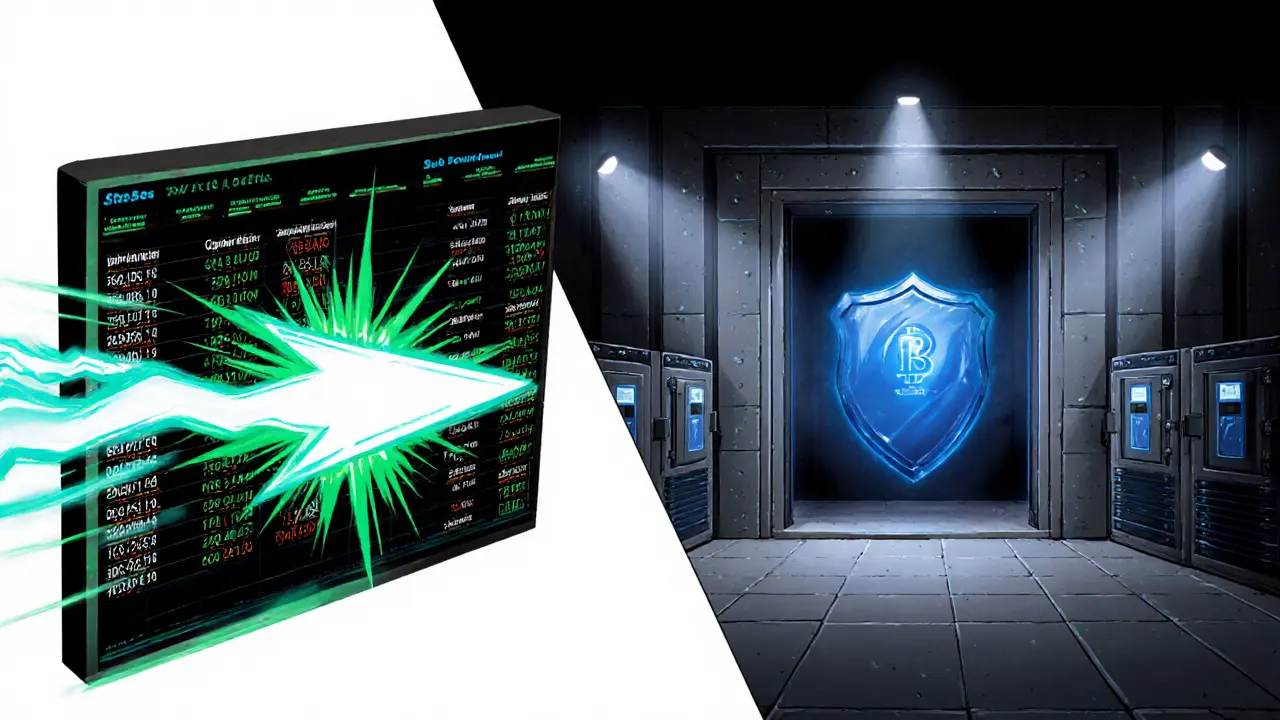
Security & Compliance - Is My Money Safe?
Security is the biggest reason traders stick with a platform. RadioShack takes a hybrid approach.
- Hot wallet: Powered by a hardware security module (HSM) that signs transactions in real time. This hot pool holds no more than 2% of total assets at any moment.
- Cold storage: 98% of user funds are stored in multi‑signature vaults spread across three geographically separate data centers, using Ledger Vault devices.
- Audits: Quarterly security audits are performed by Trail of Bits and posted publicly on the company blog.
- Insurance: A $20million policy from Nexus Mutual covers losses from hacks or smart‑contract failures.
- KYC/AML: Optional for users under $2,000 per withdrawal; above that, a standard KYC workflow (photo ID, selfie, proof of address) is required. The platform uses Chainalysis for transaction monitoring.
In practice, the platform has not reported any major security incidents since launch, and the combination of hot/cold segregation plus third‑party audits makes it a solid choice for both newbies and seasoned traders.
Liquidity & Trading Pairs
Liquidity on a Layer‑2 exchange can be a double‑edged sword. On one hand, the roll‑up tech compresses orders, but on the other, most liquidity providers still favor mainnet venues.
RadioShack lists 45+ pairs, focusing on:
- Major ERC‑20s: USDC, USDT, WETH, DAI, LINK.
- DeFi tokens with high Arbitrum adoption: GMX, BAL, APE.
- Its own RSK token against ETH and USDC.
Average spread for USDC/WETH sits at 0.3%, a bit tighter than many DEXs on Arbitrum but slightly wider than centralized exchanges. If you need deep order‑book depth for niche altcoins, you’ll likely route part of the trade through a larger hub like Binance and then bridge the remainder to RadioShack.
User Experience - How Easy Is It to Get Started?
Signing up is a two‑step process. First, you create a username and password. Second, you choose whether to link a wallet (MetaMask, Coinbase Wallet, or the native RadioShack wallet).
- Account creation: Takes under a minute; email verification is optional.
- Deposit: Click “Deposit”, copy the Arbitrum address, and send any ERC‑20 token. The UI shows a “pending” state that flips to “available” within three seconds.
- Trade: Use the simple order form; the “estimated fee” field updates in real time based on current network conditions.
- Withdraw: Enter the destination address, confirm via 2FA (SMS or authenticator app), and watch the transaction confirm on Arbitrum Explorer in under ten seconds.
The platform also offers a built‑in tutorial that guides beginners through buying their first token, which is handy if you’re new to NFTs or DeFi.
Pros & Cons - The Quick Verdict
Every exchange has strengths and trade‑offs. Here’s a snapshot you can scan at a glance.
| Pros | Cons |
|---|---|
| Sub‑cent gas fees thanks to Arbitrum | Liquidity still lags behind major CEXs for smaller altcoins |
| Transparent tiered fee schedule | KYC required for withdrawals > $2,000 |
| Robust security: hot/cold split, audits, insurance | Limited fiat on‑ramps (only via partner banks) |
| Native staking token with fee discounts | Mobile app occasional sync lag during network spikes |
| Friendly UI that echoes classic retail experience | Brand confusion - some users still associate “RadioShack” with electronics stores |
Final Thoughts - Should You Trade on RadioShack?
If you value fast, cheap trades and appreciate a platform that treats security like a checklist, RadioShack on Arbitrum is worth a try. The RadioShack crypto exchange isn’t trying to beat Binance on volume, but it offers a niche where everyday users can dip their toes into DeFi without paying a premium.
For high‑frequency traders chasing exotic pairs, you’ll probably still use a bigger hub and bridge funds when needed. For casual investors, NFT collectors, or anyone who wants a simple “buy‑and‑hold” experience on a Layer‑2 network, RadioShack hits the sweet spot.
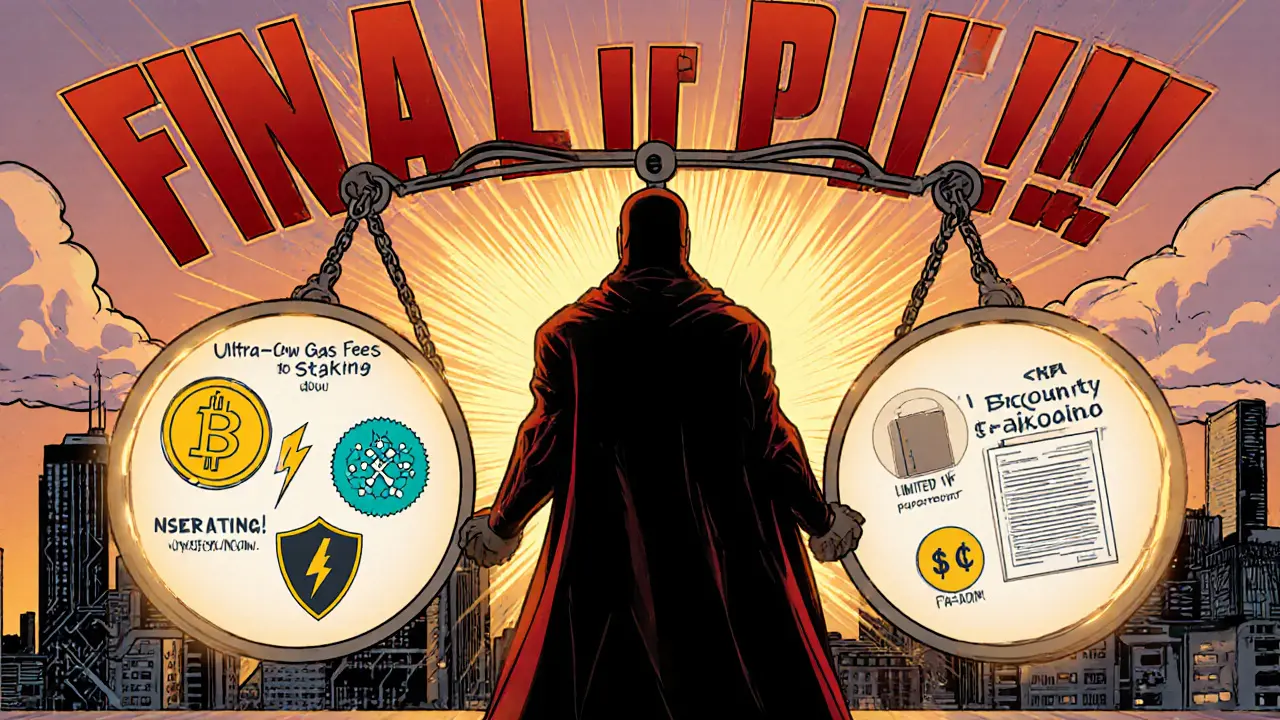
Frequently Asked Questions
Is RadioShack regulated?
RadioShack is not a licensed broker‑dealer in any jurisdiction, but it complies with global AML standards through Chainalysis and employs KYC for withdrawals over $2,000. The platform operates as a crypto‑only service, so traditional banking regulations don’t fully apply.
Can I trade on RadioShack without a wallet?
Yes. RadioShack offers a custodial wallet that’s created automatically when you sign up. You can also connect a non‑custodial wallet like MetaMask for full control.
What are the main advantages of using Arbitrum for trading?
Arbitrum bundles many transactions into a single roll‑up, which cuts gas fees to a fraction of Ethereum’s mainnet cost and speeds up settlement to a few seconds. This makes frequent trading affordable and less stressful.
How does RadioShack’s insurance work?
The $20million Nexus Mutual policy covers losses from hacks, smart‑contract bugs, or custody failures. Claims are processed after a forensic audit, and the policy is renewed annually.
Is there a native token, and what’s its purpose?
RadioShack’s native token, RSK, is used for staking, fee discounts, and governance votes on platform upgrades.
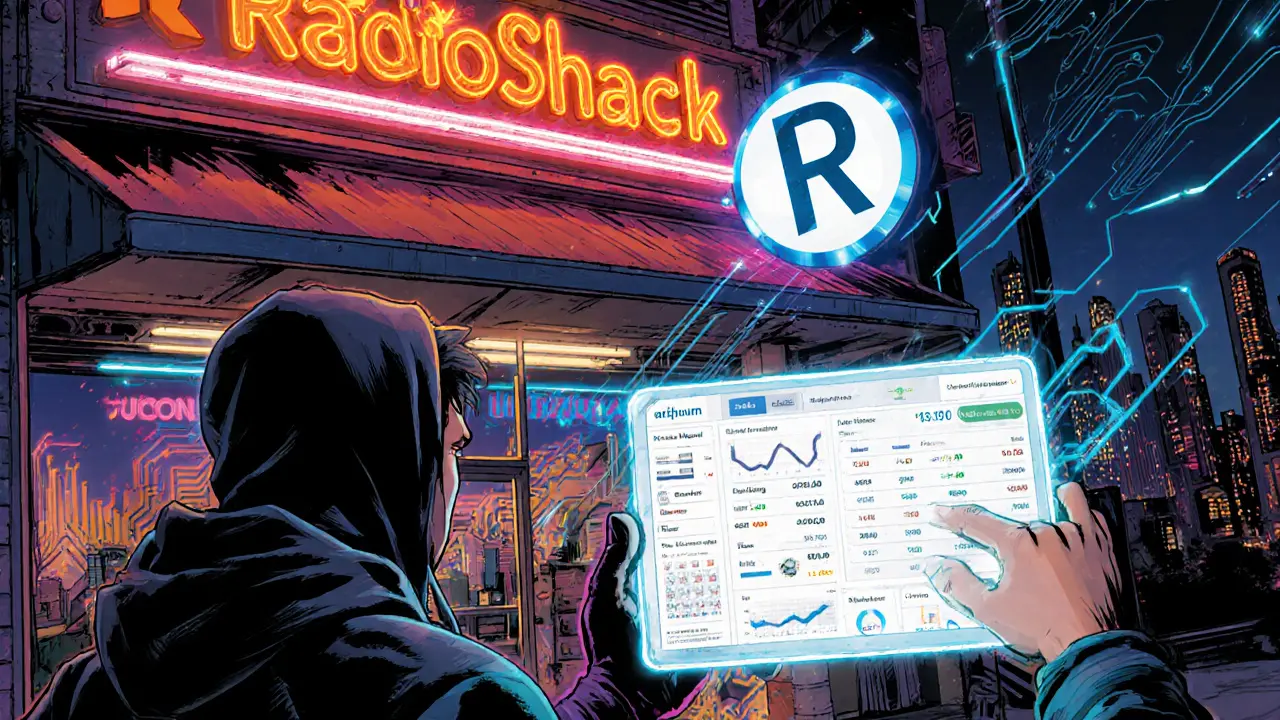
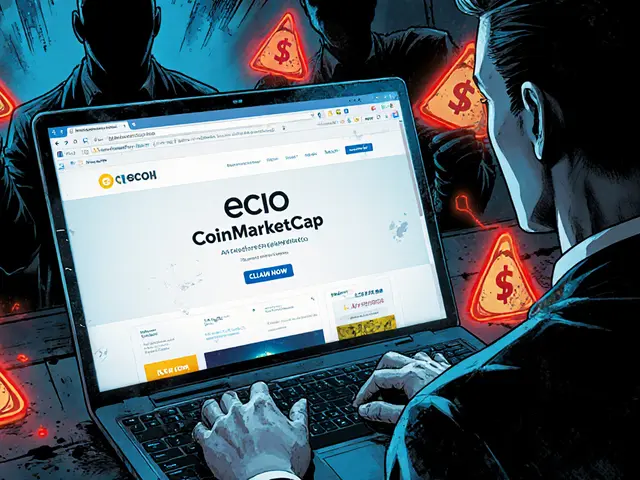

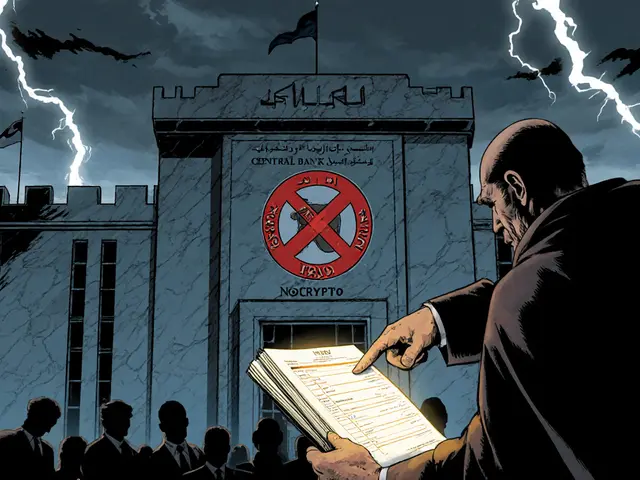
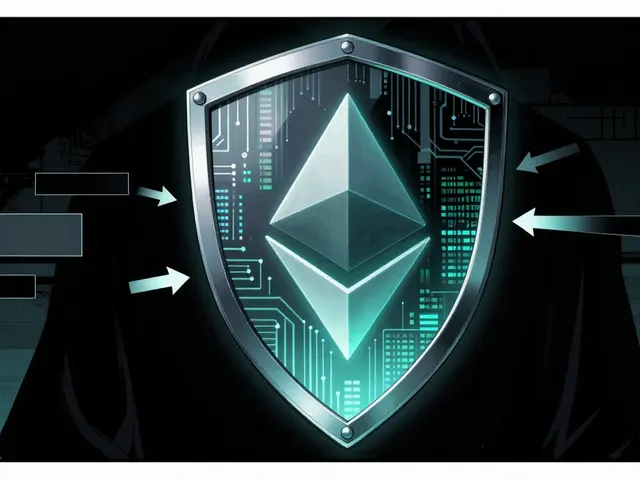

17 Comments
John Kinh
December 4 2024Honestly, I’m not impressed – the fees are just a marketing gimmick 😂
Nathan Blades
December 15 2024Listen up, fellow traders! The Arbitrum‑powered RadioShack exchange is a bold experiment that could reshape how we think about ultra‑fast, low‑cost swaps. It’s not just about shaving a few cents off gas; it’s about redefining the user experience in crypto. The platform’s UI feels like a nostalgic nod to the old retail sites, yet under the hood it’s blazing fast. If you crave speed without sacrificing security, this might just be the sweet spot. Remember, the real test will be how it holds up under heavy volume – stay vigilant!
Debby Haime
December 25 2024The fee tier is transparent: 0.10% maker, 0.18% taker, and a 15% discount after $50k monthly volume. Deposit fees are effectively zero, thanks to Arbitrum’s sub‑dollar gas costs. Withdrawal is a modest 0.0005 ETH or $0.30 fiat. For most retail traders, that translates to roughly $14 on a $10k trade day – competitive against major CEXs.
katie littlewood
January 4 2025Stepping into RadioShack’s Arbitrum platform feels like opening a surprisingly sleek boutique tucked behind a familiar storefront sign. First, the onboarding is almost painless; you can create an account in under a minute and either use the custodial wallet they provision or connect your own MetaMask with a couple of clicks. Once inside, the dashboard greets you with bright, colour‑coded sections that make the whole experience feel intuitive rather than intimidating. The real‑time order book updates instantly, and the “price‑alert” feature nudges you when a target is hit, which is a handy little nudge for those of us who aren’t glued to the screen all day.
When you decide to deposit, the transaction lands on Arbitrum in a blink – typically under three seconds – and the UI reflects the change with a satisfying green tick. The platform’s fee calculator updates live as you tweak trade size, giving you a crystal‑clear view of cost before you hit confirm.
Liquidity, while still catching up to the giants, is surprisingly deep for the top‑tier pairs; USDC/WETH spreads hover around 0.3%, which is respectable for a Layer‑2 venue. As for security, the hot‑wallet never exceeds 2% of total holdings, and the cold storage employs multi‑sig vaults across three data centres, plus quarterly audits by Trail of Bits – a reassuring safety net.
The native RSK token adds a layer of gamified incentive: staking it nets you a tidy 5% APY and unlocks further fee discounts, which feels like a modest but meaningful perk for regular users.
Even the mobile app mirrors the web experience faithfully, though you might notice a tiny sync lag during network spikes – a small price to pay for the convenience of on‑the‑go trading.
All in all, the platform manages to blend the nostalgic retail vibe of the RadioShack brand with cutting‑edge blockchain tech, delivering an experience that is both approachable for newcomers and efficient enough for seasoned traders. It’s not a one‑size‑fits‑all solution, but for anyone looking to dip their toes into DeFi without drowning in fees, it’s a compelling stop on the journey.
Jenae Lawler
January 14 2025From a doctrinal perspective, one must interrogate the epistemic foundations upon which RadioShack purports its market relevance. The invocation of ‘legacy brand’ as a differentiator appears as a prodigious exercise in nostalgic posturing, rather than a substantive competitive advantage in the fiercely meritocratic arena of decentralized finance. Moreover, the nominal fee discount threshold of $50,000 monthly volume seems calibrated to exclude the average retail participant, thereby erecting a barrier antithetical to the egalitarian ethos professed by the blockchain community. In sum, the platform’s rhetoric is replete with grandiloquent self‑assertion, yet its tangible value proposition remains, at best, marginal.
Chad Fraser
January 25 2025Hey, I get where you’re coming from, but the low gas fees and quick settlement actually make it pretty friendly for everyday folks. Give it a try – you might be surprised how smooth the process feels.
Parker Dixon
February 4 2025👍 The platform’s multi‑sig cold storage paired with periodic audits offers a solid safety net. If you’re concerned about custodial risk, consider staking the RSK token – the 5% APY not only yields passive income but also grants fee reductions, creating a virtuous cycle of saving and earning.
Bobby Ferew
February 14 2025From a technical standpoint, the roll‑up architecture employed by Arbitrum effectively amortizes transaction costs, resulting in sub‑cent gas expenditures. However, the liquidity depth on niche ERC‑20 pairs remains suboptimal, leading to slippage that can erode the marginal fee savings you anticipate.
celester Johnson
February 25 2025In the grand tapestry of crypto exchanges, RadioShack’s attempt is a microcosm of the perpetual tension between hype and substance. One could argue that the brand’s foray into blockchain is less a strategic pivot and more a nostalgic curiosity, an echo of a bygone retail era trying to find relevance in a decentralized future.
Prince Chaudhary
March 7 2025While respecting the platform’s ambition, I’d advise newcomers to start with modest deposits and familiarize themselves with the UI before scaling up. Patience and a methodical approach will serve you better than chasing large volume discounts instantly.
Mark Camden
March 17 2025It is incumbent upon any discerning participant to scrutinize the regulatory posture of RadioShack, which, despite its compliance with AML standards via Chainalysis, remains unlicensed as a broker‑dealer. This regulatory gray zone may present unforeseen legal exposures for users, particularly in jurisdictions with stringent securities laws.
Evie View
March 27 2025Regulatory ambiguity is a red flag – I’d stay clear until they acquire proper licensing. Don’t risk your capital on a platform skirting the law.
Sidharth Praveen
April 7 2025Keep your chin up! Even if the liquidity isn’t perfect, the low fees and speed can still make a big difference for everyday traders. Small steps lead to big gains.
Sophie Sturdevant
April 17 2025Strategically, leveraging RSK staking to unlock fee discounts is a smart move – it maximizes ROI while minimizing transaction costs.
Somesh Nikam
April 27 2025👍 Great tip! I’ve been staking RSK and the fee cuts are noticeable. Plus, the APY keeps my portfolio humming. 🚀
Jan B.
May 8 2025The platform’s UI is clean and intuitive, making onboarding simple.
MARLIN RIVERA
May 18 2025This exchange is a meme-overhyped, underdelivered, and riddled with tokenomics nonsense.